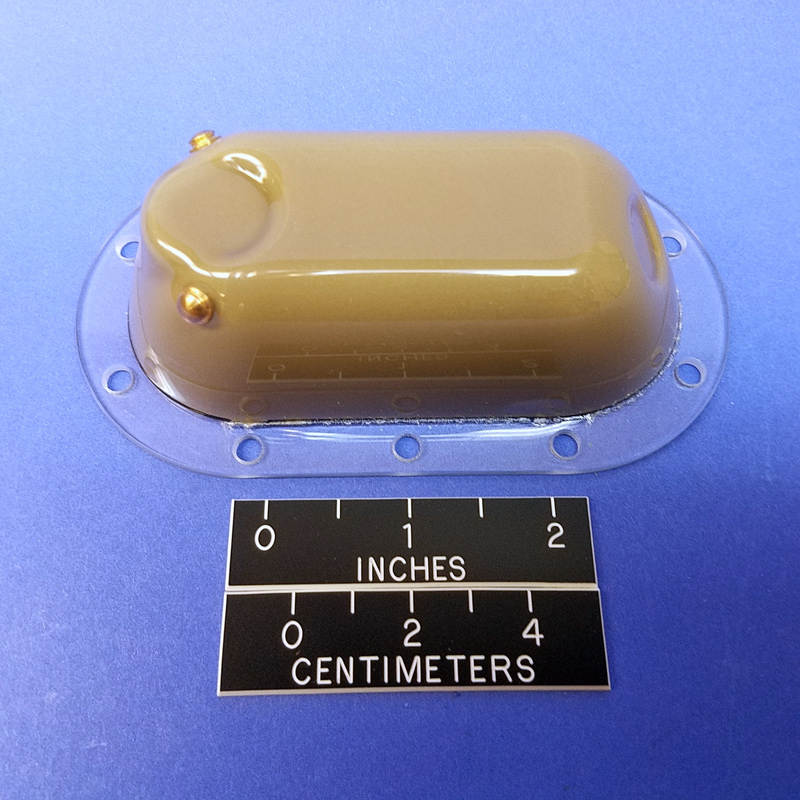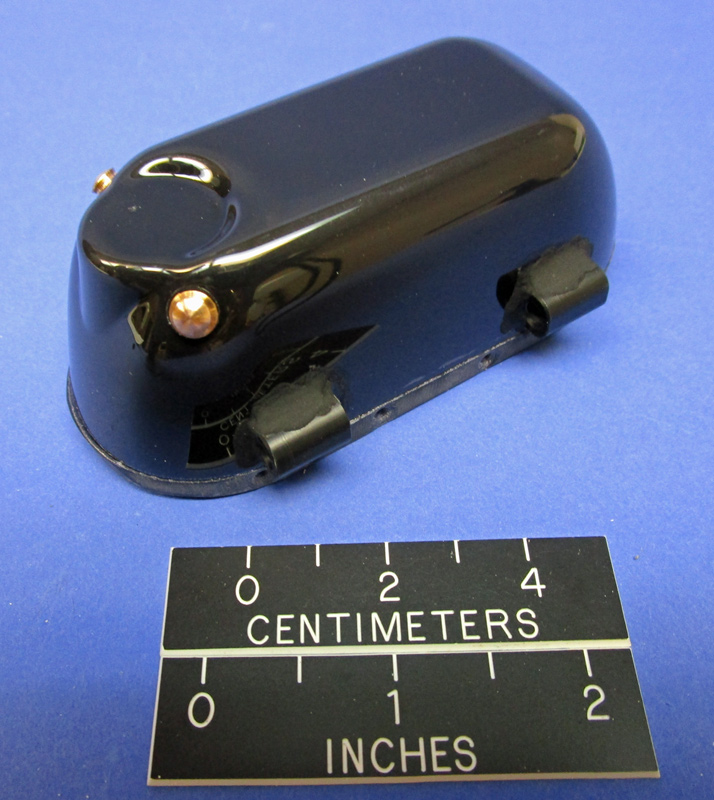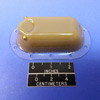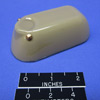SeaTrkr GPS/Iridium Marine -4 Systems
GPS/Iridium 2-way tag for Sea Turtles, Marine Mammals, Crocodilians, Buoys, and AUVs
SeaTrkr capitalizes on the world-wide continuous coverage and two-way communication capabilities of the Iridium satellite system, and Telonics unique QFP positioning, to provide a new, advanced tagging option for marine and amphibious applications.
Models
| Model |
Dimensions*
L x W x H (in, cm) |
Unit Weight* (g) |
QFP Operational Life (years) |
GPS Operational Life (years) |
| SeaTrkr-4170-4 |
2.2 x 1.4 x 1.2
5.6 x 3.5 x 3.1 |
85 |
0.4 |
0.7 |
| SeaTrkr-4370-4 |
4.1 x 1.8 x 1.4
10.3 x 4.5 x 3.6 |
190 |
1.1 |
1.8 |
| SeaTrkr-4375-4 |
4.1 x 1.8 x 1.4
10.3 x 4.5 x 3.6 |
210 |
1.1 |
1.8 |
*Dimensions and weight exclusive of optional baseplates and side lugs as shown.
Operational life depends on GPS, QFP, Iridium, and VHF programming details as determined through consultation with Telonics. In these examples, the QFP operational life assumes 1 QFP/hour; Iridium transmissions including hourly QFP, dive, and temperature data; average temperature of 25°C, 15-second average navigation time to QFP, an average of 3 Iridium transmission attempts per successful message, and VHF disabled as might be characteristic of an application on a sea turtle. In that scenario Iridium transmissions will be forced about every 10 QFP positions or sooner depending on other data that is also sent. The GPS example assumes GPS every 4 hours, Iridium transmitting the GPS positions every 2 days, average temperatures of 0°C, 75-second average navigation time to GPS, an average of 3 Iridium transmission attempts per successful message, and VHF transmitting 8 hours per week at 40 beats per minute as might be used on an alligator. Adding pressure data could result in more frequent Iridium transmissions and decreased life dependent on what specific data was transmitted.
Key Features - Iridium System
- The Iridium satellite network consists of 66 cross-linked satellites in low earth orbit (LEO), and provides continuous (24/7) coverage world-wide.
- Iridium is a two-way system. The Iridium module on the animal checks for an adequate link prior to data transmission, and data acknowledged as successfully received does not need to be repeated. Data not acknowledged can be sent later when the animal is on the surface for extended periods or hauled out.
- The two-way link allows commands to be sent to the Iridium unit while it is deployed; for example, changing between pre-programmed auxiliary schedules.
- Iridium provides for low data recovery costs, as low as ~$7.50/month for some applications and ~$30-$40/month to transfer hourly QFP locations and limited dive-time data. It also allows high data transfer capabilities (e.g. up to ~340 bytes/hour at increased cost).
Key Features - SeaTrkr
- The SeaTrkr tag can be provided with several different attachment options. When attaching the tag, the brass terminals and top of the tag should not be covered. We recommend that all attachment materials be kept below the level of the brass terminals.
- These GPS/Iridium tags are designed for marine applications. Both the GPS and Iridium antennas are internal so there is no need for an external whip antenna, which is subject to breakage and a point of weakness in many tags. The tags are designed to withstand high pressures experienced during deep ocean dives exceeding 1500 psi.
- QFP is Telonics quick fix positioning technology that obtains the data necessary to calculate a GPS position in as little as 3 seconds. This allows positions to be determined during short surfacings when they otherwise would not be achieved, and with less energy expenditure than a standard GPS position. Telonics Iridium units can be configured to collect only GPS, only QFP, or a mix of the two location types.
- A single Iridium message can contain ~10 QFP positions (or up to ~70-80 GPS positions).
- Salt-water-switch (SWS) synchronizes GPS attempts and Iridium transmissions with surfacings to maximize data collection and transmission, and suppresses Iridium transmissions and GPS attempts while under water. The SWS allows collection of dive data including length of dives, dive count, and percentage of time spent under water. The SWS settings can be selected to allow detection of either seawater, or most freshwater and seawater (submergence may not be able to be detected in water with very low conductivity).
- The SeaTrkr-4375-4 model includes a pressure transducer; which allows collection and transmission of additional data including depth of dives, profiling of a single dive, and/or percentage of time the animal spends in user-defined depth layers.
- Temperature sensing is available.
- Users can program or reprogram Telonics GPS/Iridium units through use of Telonics Product Programmer (TPP). TPP can be used to obtain estimates of battery life and data acquisition costs under various possible programming scenarios prior to deployment. Deployed units can have their schedules or other programming parameters changed remotely using TPP.
- GPS/QFP collection schedules, Iridium transmission schedules, and sensor options can all be user-defined. Scheduling can be programmed to change over time (e.g. seasonal changes where monitoring might be more or less intensive at certain times of the year). The primary and three "Auxiliary" schedules are available.
- All positions determined and sensor data collected is stored-on-board the unit, thus if the tag is able to be recovered, stored data can supplement what was transmitted.
- A real-time clock and calendar controls all timing functions and is re-synchronized with GPS time to assure high accuracy timing. All timing is programmed using Coordinated Universal Time (UTC).
- When turned off using a magnetic switch, these units consume less than 10 µA; this allows storage for extended periods with minimal impact on operational life.
- Units can be refurbished to their original condition at Telonics.
- Telonics GPS Iridium units are FCC and IC certified and available for use throughout the United States and Canada with no additional licensing required for the data transfer component.
- Data retrieved through the Iridium system, or downloaded from a tag in hand, are processed using Telonics Data Converter (TDC). TDC is used to convert raw data from Telonics transmitters into data reports and to display locations on Google Earth and Google Maps. You can review, save, and edit TDC reports in Microsoft Excel or other spreadsheet programs.
- Optionally delivers data to EarthRanger, allowing you to map historical and real-time locations online and create a unified view of data from Telonics transmitters and other sources.
Electronic Specifications - GPS/Iridium
µGPSI-25 GPS/Iridium/VHF Specifications - Show
General Specifications
| Timing Accuracy |
Timing is synchronized to GPS time when available.
If the GPS time is not available, then internal timing accuracy is:
6 min/year at 25° C
30 min/year -20 to +40° C
47 min/year -40 to +70° C |
| Available Sensors |
Mortality, Activity, Temperature, Low Voltage (as allowed by specific software)
Salt-water-switch is a hardware and software option on some configurations. |
| Memory Capacity |
Capable of storing ~500K fixes in nonvolatile flash memory in association with other sensor data. |
| Programming |
Programmable using Telonics TPP software and TSC-9A cable. Programming options are hardware and software dependent, but include GPS, Iridium, and VHF schedules; sensor activation and schedules; and power output. |
GPS Receiver Specifications
| Performance |
-163 dBm tracking sensitivity
-147 dBm acquisition sensitivity |
| Datum |
WGS-84 |
| Time to First Fix (TTFF) |
35 seconds typical (with clear view of sky)
Quick Fix Pseudoranging (QFP) 3-5 seconds typical (with clear view of sky) |
Iridium Module Specifications
| General |
FCC ID Q639603N
Industry Canada ID 4629A-9603N
Frequency Range 1616-1626.5 MHz
Applicable FCC Rules CFR Title 47, parts 2, 15, and 25
Power Output 1.0 w (average) |
| Mechanical/Environmental |
Operating Temperature Range -40 to +60 °C |
VHF Transmitter Specifications (VHF is not implemented in all configurations)
OPERATION INTERLOCK: All elements of the VHF transmitter component are forced off whenever the Iridium transmitter module is on. This interlock device forcibly prevents simultaneous operation of the two transmitters, thus they are not considered to be co-located under FCC regulations.
| Available Frequency Options |
Option 702 134-139 MH
Option 705 140-154 MH
Option 707 146-160 MH
Option 715 156-172 MH
Option 720 160-177 MH
Option 740 174-192 MH
Option 750 191-210 MH
Option 760 210-237 MH
Note: Frequency can be programmed in 100Hz steps within a given frequency range. |
| Frequency Stability |
Better than ±3ppm at room temperature ±5 ppm total tolerance over full temperature range |
| Operating Temperature |
-40° to +70° C |
| Pulse Width |
Programmable (10 to 250 msec) |
| Pulse Period |
Programmable (265 to 5000 msec)
Multiple pulse periods selectable per specific software and TPP. |
| Transmitter Timing |
Programmable, including daily and seasonal duty cycles. |
| Power Output |
Selectable levels via hardware and software.
Effective Isotropic Radiated Power (EIRP) varies, depending on packaging, antenna configuration, and immediate environmental conditions. *California Users: This transmitter meets the California requirement of EIRP < 0.0009W for all configurations. |
| Emission Designator |
2k00P0N |
| Harmonic Suppression |
Better than 30dB (>40 dB typical) |
| Spurious Emissions |
<-35 dBc at 10 kHz offset from carrier |
| Frequency |
Aging: <2ppm/year
Shock: <1ppm 3000g x 0.3ms x ½ sine x 3 dir |
| VSWR |
RF output stable to 10:1 VSWR, all phases
Radiated harmonic levels are degraded with poor load VSWR.
Spurious emission specification maintained for >10:1 VSWR |
Related Products
Photo Gallery
Lithium Battery Shipping Regulations
Telonics Inc. ships all systems containing lithium batteries in accordance with the US Department of Transportation rules for hazardous materials set forth in 49CFR and the IATA Dangerous Goods Regulations.
Shipping dangerous goods can be complicated and confusing, consult a dangerous goods specialist if needed. The general requirements for shipping lithium batteries according to 49CFR are located in Part 173, Subpart 173.185 in the link below.
http://www.ecfr.gov/cgi-bin/text-idx?SID=e8334217c2c8d081457a5156872ad037&tpl=/ecfrbrowse/Title49/49cfrv2_02.tpl#0
Service Commitment
Since 1970, Telonics has built a reputation based on product quality, product support, service, and customer satisfaction. Telonics strives to produce the highest quality products, and to support those products accordingly.
Because of extreme conditions and the unpredictable nature associated with most telemetry applications, problems occasionally arise. Most problems can be resolved quickly. In all cases, we hope to be able to work in partnership with users to resolve problems to the user's satisfaction and to uphold our demonstrated commitment to excellence. If problems should arise, all products must be returned to our factory for failure analysis.
Warranty: GEN 4 GPS Systems - Show
Telonics warrants its GPS products to be free from defects in material and workmanship for a period of one year from the date acquired. Telonics does not warrant batteries.
Telonics designs and manufactures systems for a variety of applications using several satellite systems (GPS, Argos, Iridium, and Globalstar). At the time of manufacturing, Telonics equipment is tested to verify compatibility with the applicable satellite system(s). Telonics does not warranty equipment against changes in satellite system specifications or satellite operation after the date your equipment was manufactured. Unforeseeable or unplanned system changes would include, but are not limited to, elevated ambient noise levels in the radio frequency bands used for satellite communications, elimination of service in a region of the world, data outages due to technical problems within the satellite system network, or reductions in data transfer capability due to alterations in the constellation as a result of premature space vehicle failures or failure to replace space vehicles in a timely manner.
If a defect occurs, return the equipment to us within the proper time frame at the following address: TELONICS, 932 E. IMPALA AVENUE, MESA AZ USA 85204-6699. The customer shall arrange for and pay all shipping, insurance and related charges incurred in the shipment to and from Telonics under this warranty. Damage to any equipment resulting from misuse, accidents, unauthorized service, extreme conditions, or other causes, is excluded from this warranty. Telonics does not assume responsibility for loss or damage to equipment during shipment. Telonics does not assume responsibility for delays resulting from shipment on commercial or private carriers. We insure all equipment shipped from our facility and suggest that shipments to Telonics also be insured.
Upon the timely return to our facility, if defective, the product will be replaced or repaired at our discretion at no cost to the customer. This remedy is the exclusive remedy. This product is supplied without any further warranties or conditions, expressed or implied, including warranties of merchantability, quality or fitness for particular reason or those arising by laws, statutes or trade usage or course of dealing.
The entire risk, as to the results and performance of the product, is assumed by the customer. Neither Telonics, nor its suppliers, shall have any liability to the customer or any other person or entity for any indirect, incidental, special, or consequential damage whatsoever, regardless whether Telonics has been told of the possibility of such damages or that such damages might be foreseeable. Telonics has no responsibility or liability for the claims of any third party. The maximum aggregate to the customer, of Telonics and its suppliers, shall not exceed the amount paid by the customer for the product.










